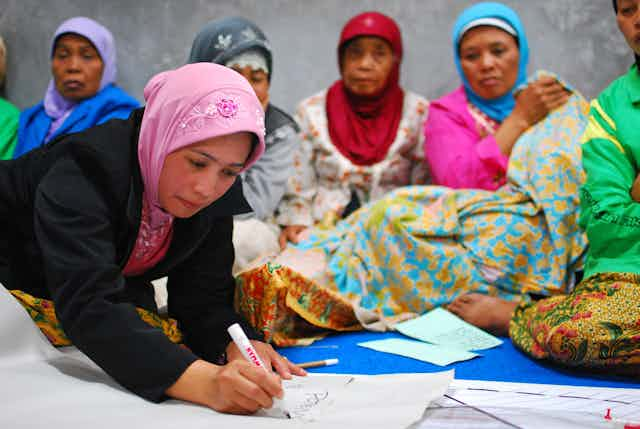Every year the lives of millions of people are destroyed by disasters, both caused and made worse by the climate crisis. From wildfires to droughts, rich and poor countries face increasingly frequent emergencies – but the world’s most vulnerable bear the brunt of their effects.
Even if global warming is limited to 1.5C above pre-industrial levels, as stipulated in the Paris Agreement, increasing numbers of people will still be left without healthcare, shelter and food when disasters hit.
In many countries that host refugee camps (from Bangladesh to South Sudan) cramped, hot conditions in camps lead to breakouts of communicable illnesses like tuberculosis and cholera.
These environments can also create a breeding ground for diseases transmitted by mosquitoes, like malaria and dengue fever and worsen skin conditions. Inadequate healthcare services are overwhelmed, and mental as well as physical health deteriorates.
In the long term, limited access to healthcare and nutritious food for children stunts their development. This has major economic fallouts: if children are unable to thrive, they cannot grow up to achieve their full potential in society and to help others in turn. This is just one of the immeasurable health impacts of the climate emergency.
We asked aid workers how to best prepare for the climate emergency in places where its effects are most severe when we carried out our Sounding the Siren study, which is detailed in this graphic novella.
We came up with seven critical changes to mitigate the impacts of climate change on human health in vulnerable regions of the world.

1. Get informed
Accessing credible, accurate climate information is more important than ever. Everyone, from aid workers to community leaders, needs to be aware of the realities of climate change and its local effects if they are to avoid, or help treat, its medical consequences. For example, tracking salt content in drinking water due to rising sea levels that pollute groundwater allows communities to prepare alternative sources of water in advance.

2. Plan ahead
The heat waves experienced across the northern hemisphere this summer offered a taste of the physical, mental and emotional distress caused by unrelenting heat and humidity. These effects are magnified in low-income countries, where crowded, exposed housing and work conditions make it more difficult to escape heat and food insecurity is more likely.
Emergency healthcare systems in vulnerable regions are designed for short term action to improve these conditions. However, given the long term impacts of the climate emergency, aid workers need to anticipate far-reaching effects including conflict over water, land and medicine. For example, the World Food Programme now plans its strategies to combat hunger at least four years in advance.
3. Act early
Preemptive action saves lives, time and money. If people, communities and aid workers are able to act early before emergencies become acute, suffering can be prevented. For example, when a region goes a certain number of days without rainfall – heralding a period of drought – health crises like life-threatening diarrhoeal disease in children can be more easily avoided.

4. Update training
Local health training is vital to respond to disasters, including infectious epidemics, that are exacerbated by the climate emergency. In 2021, the medical aid charity UK-Med worked with doctors and nurses in Yemen to build local capacity to respond to infectious disease outbreaks like COVID-19, which are likely to increase as the planet warms. This work could involve teaching life-saving skills, providing equipment and leading training courses on updated care methods.
5. Global collaboration
The scale of the climate emergency transcends the capacity of any one nation. As we saw during the pandemic, a health crisis that begins in one country can quickly spread across the planet. Humans belong to a global society, obliging us to work together across borders to prevent climate-related illness. For example, organisations like the Bangladesh Red Crescent Society and the UN Office for the Coordination of Humanitarian Affairs work together to prevent the worst effects of annual monsoon flooding on human health and wellbeing.
6. Protect the environment
Just as medical doctors are guided by the the axiom “do no harm”, humanitarian healthcare workers must prioritise minimising environmental harm. An important first step is to establish a baseline of current local environmental states to more accurately measure changes, and set local targets for things like renewable energy generation to make sure environmental degradation is reduced as much as possible. This, in turn, will decrease the burden on healthcare systems.

7. Speak up
Those in positions of privilege, such as academics and aid workers, can advocate for those most effected by the climate emergency and magnify the voices of the vulnerable. Readers can also help by joining campaigns like this one to help spread the word.

